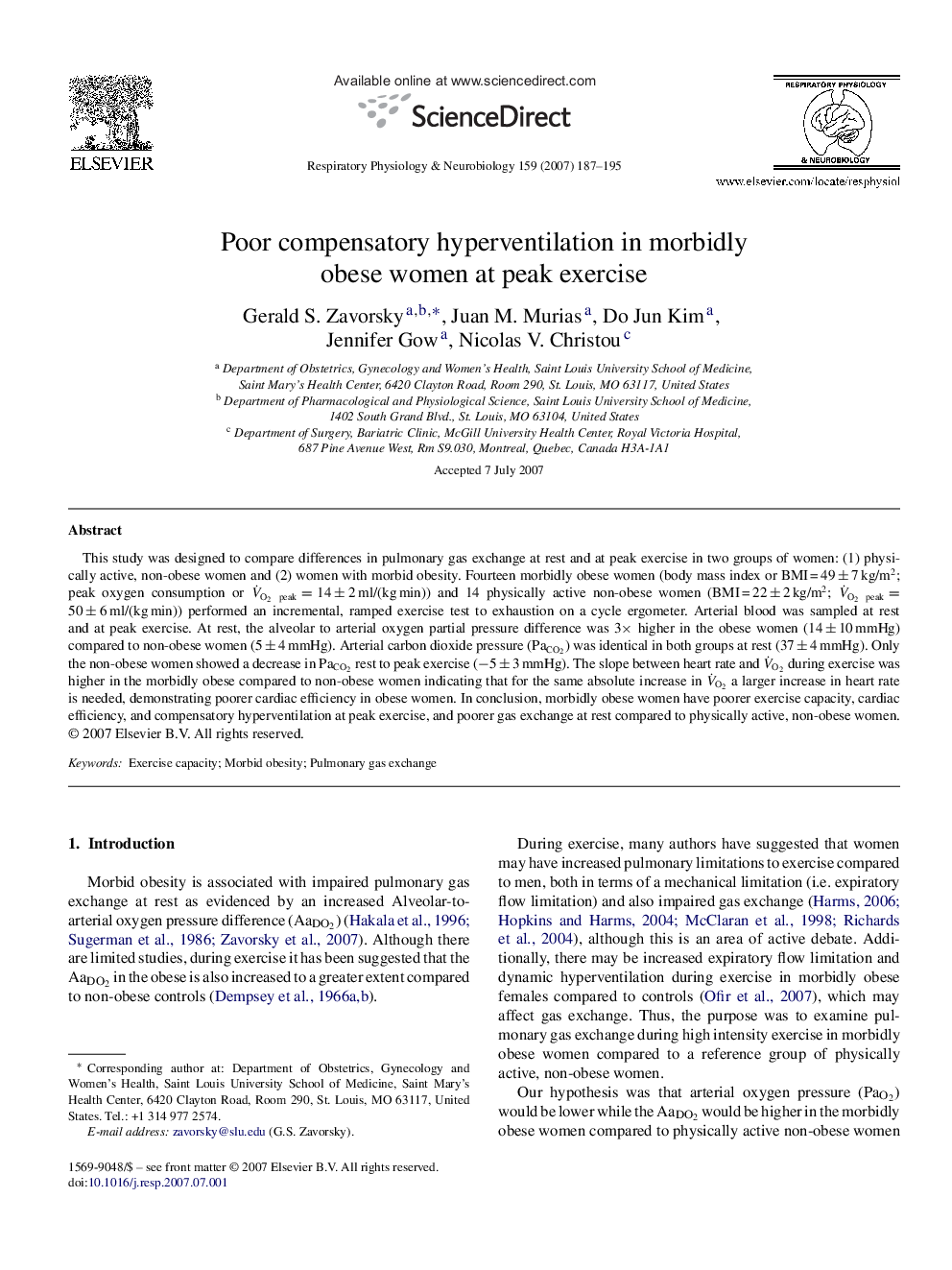| Article ID | Journal | Published Year | Pages | File Type |
|---|---|---|---|---|
| 2848278 | Respiratory Physiology & Neurobiology | 2007 | 9 Pages |
This study was designed to compare differences in pulmonary gas exchange at rest and at peak exercise in two groups of women: (1) physically active, non-obese women and (2) women with morbid obesity. Fourteen morbidly obese women (body mass index or BMI = 49 ± 7 kg/m2; peak oxygen consumption or V˙O2 peak=14±2 ml/(kg min)) and 14 physically active non-obese women (BMI = 22 ± 2 kg/m2; V˙O2 peak=50±6 ml/(kg min)) performed an incremental, ramped exercise test to exhaustion on a cycle ergometer. Arterial blood was sampled at rest and at peak exercise. At rest, the alveolar to arterial oxygen partial pressure difference was 3× higher in the obese women (14 ± 10 mmHg) compared to non-obese women (5 ± 4 mmHg). Arterial carbon dioxide pressure (PaCO2PaCO2) was identical in both groups at rest (37 ± 4 mmHg). Only the non-obese women showed a decrease in PaCO2PaCO2 rest to peak exercise (−5 ± 3 mmHg). The slope between heart rate and V˙O2 during exercise was higher in the morbidly obese compared to non-obese women indicating that for the same absolute increase in V˙O2 a larger increase in heart rate is needed, demonstrating poorer cardiac efficiency in obese women. In conclusion, morbidly obese women have poorer exercise capacity, cardiac efficiency, and compensatory hyperventilation at peak exercise, and poorer gas exchange at rest compared to physically active, non-obese women.
